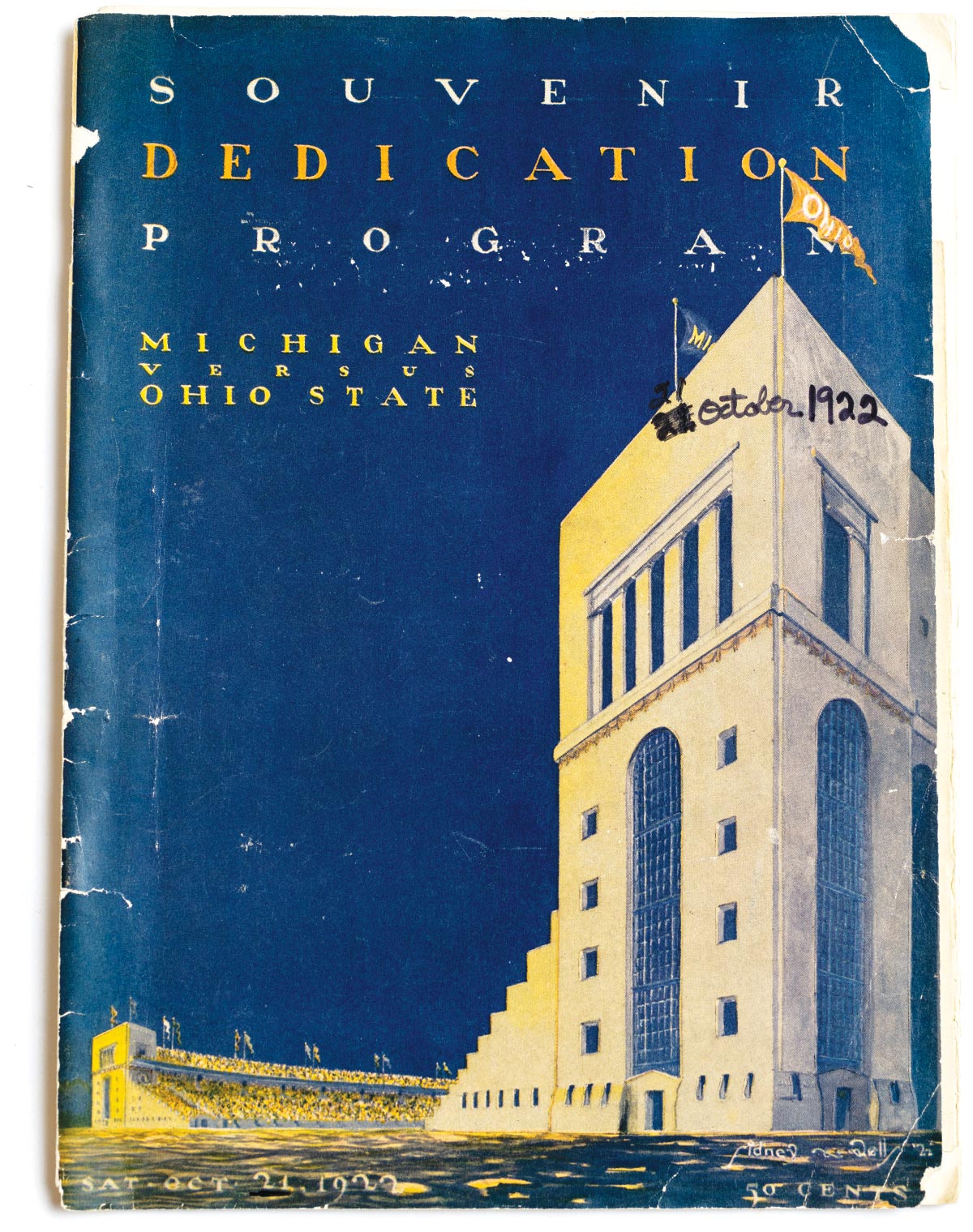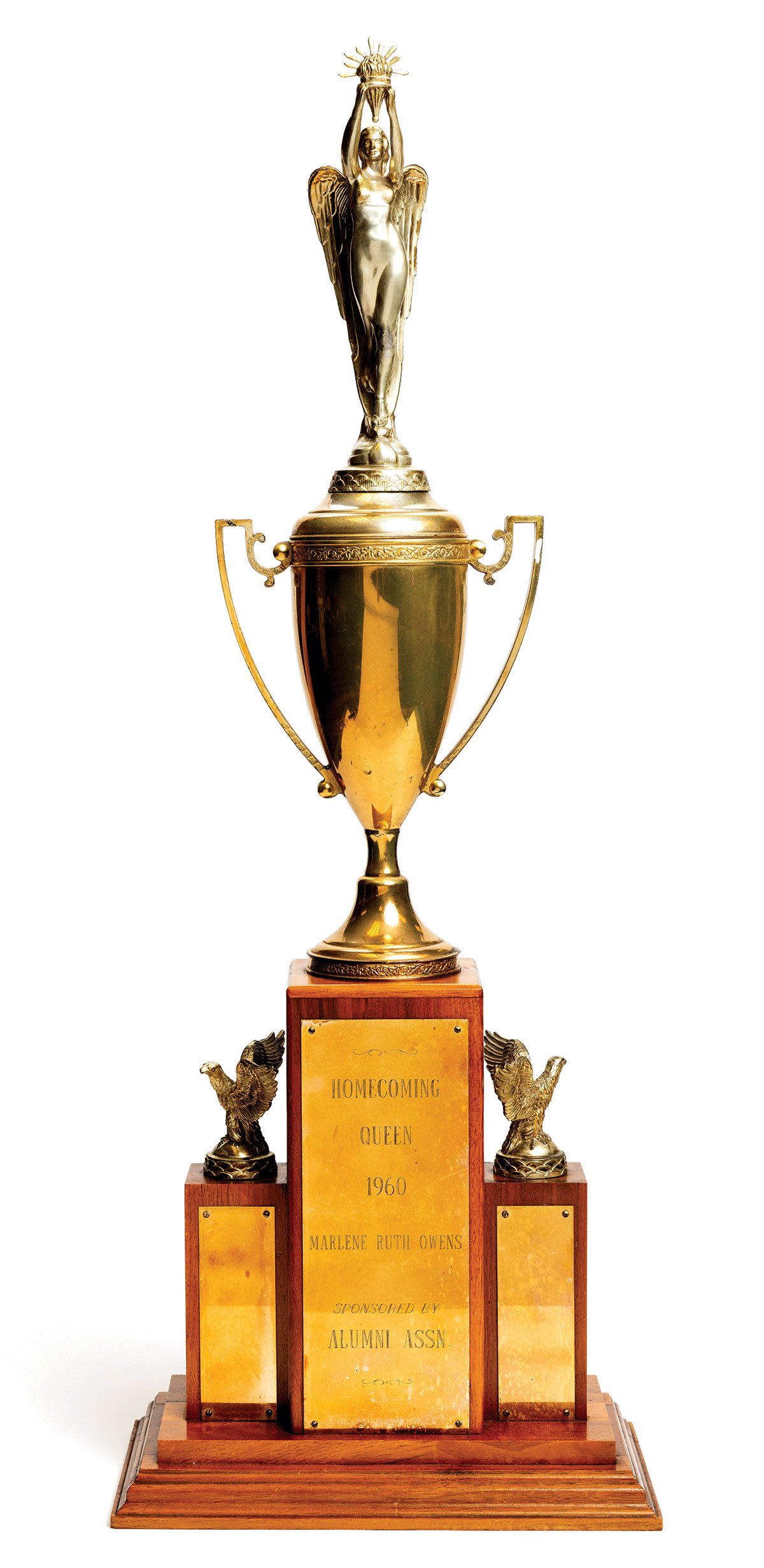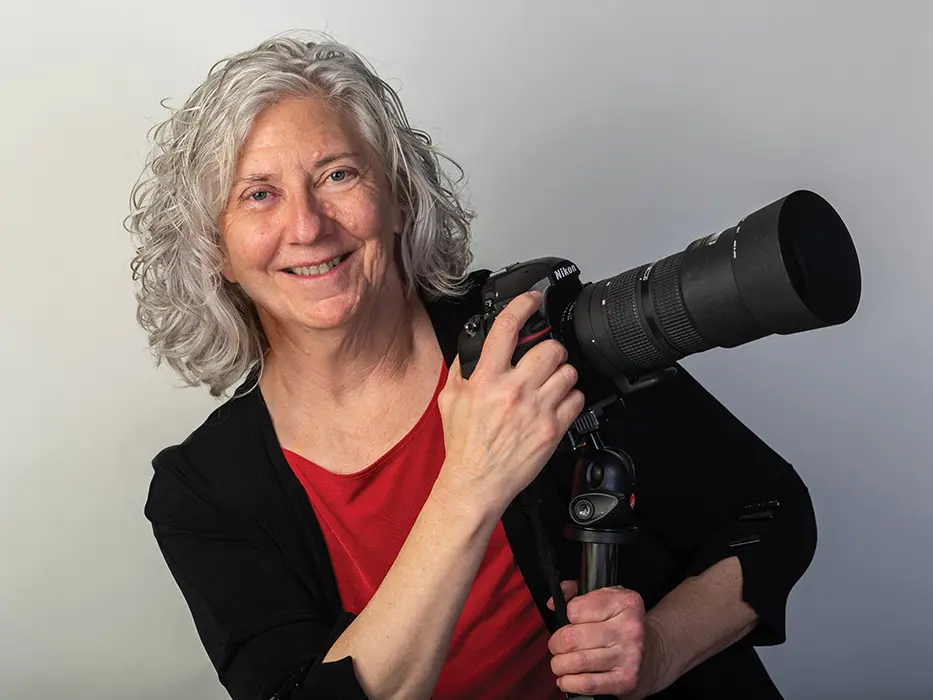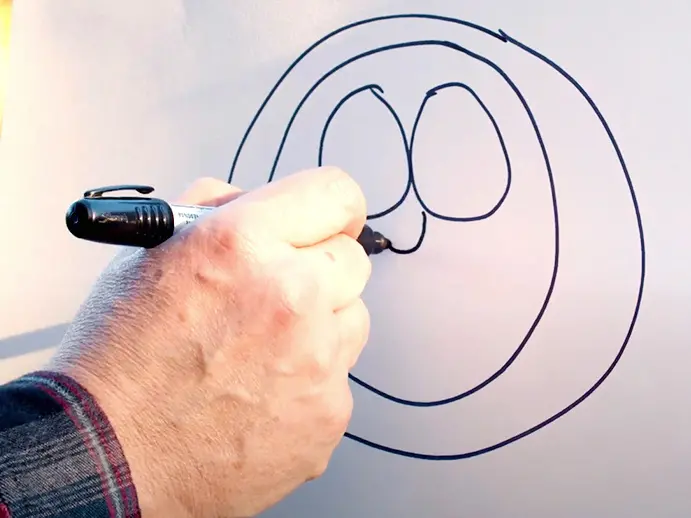8 treasures from the ’Shoe’s first 100 years
A trophy from Jesse Owens’ daughter, 1922 game tickets, Woody Hayes’ handwritten notes — University Archives has dusted off some memorabilia you’ll want to see.
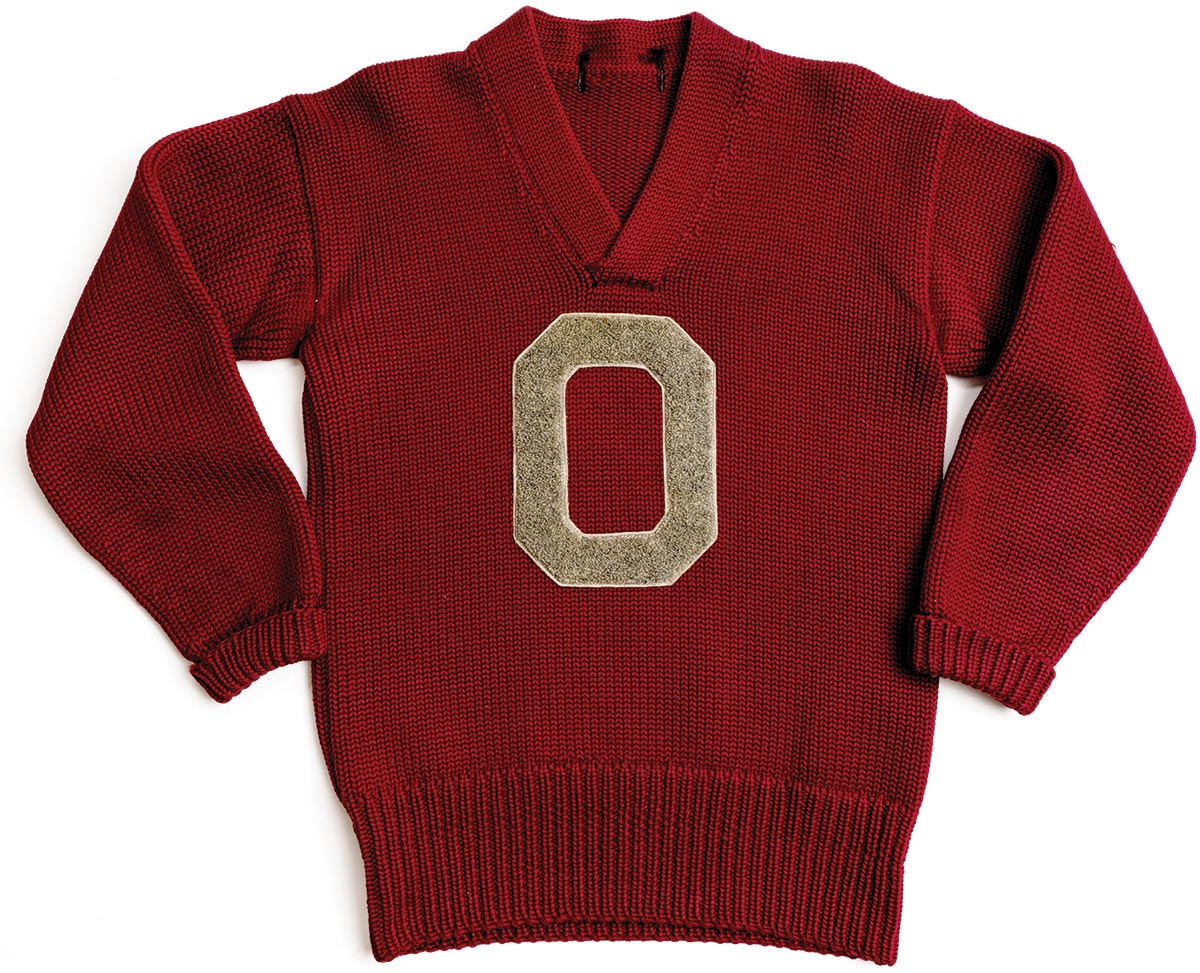
So much to cheer about
Six “Gentlemen of the Cheer” were on hand to channel the crowd’s enthusiasm when the stadium opened in 1922. This sweater featuring the Block O was worn by Harold Washburn ’37, ’37, ’44 MA when he cheered in the 1930s. The first women’s cheer squad debuted about 1938.
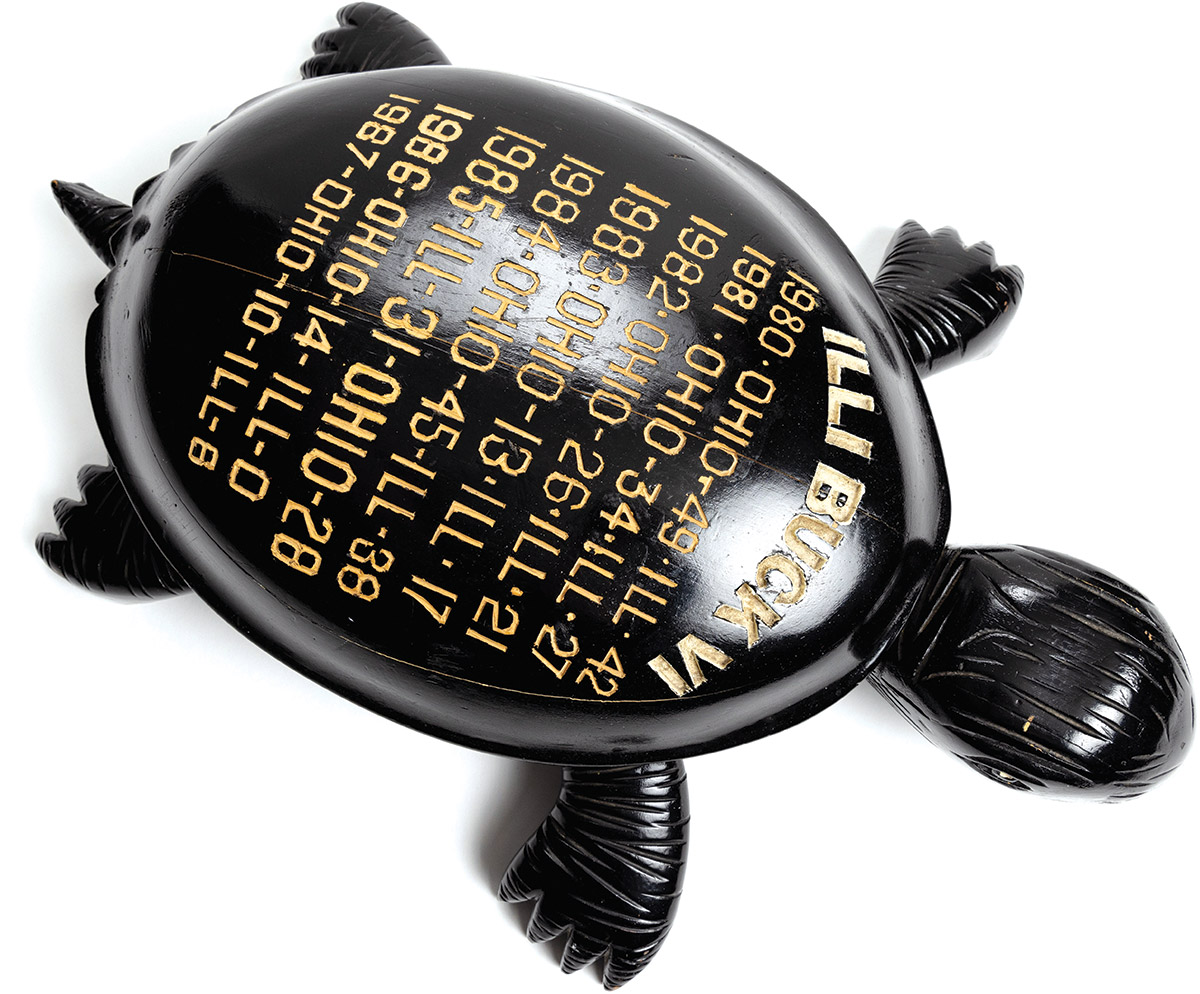
A turtle to tout the win
Members of the Bucket and Dipper junior honorary teamed up with peers at Illinois in 1925 to introduce Illibuck, a snapping turtle claimed by the football game’s winner. The live turtle was swapped twice, and wooden likenesses such as this one from the 1980s followed.
A prize fit for a queen
Marlene Owens Rankin ’61 earned this trophy in 1960, when she became the university’s first African American homecoming queen. Her parents, Ruth and Jesse Owens, attended the festivities in the ’Shoe, where her father starred on the track before earning four gold medals in the 1936 Olympics.
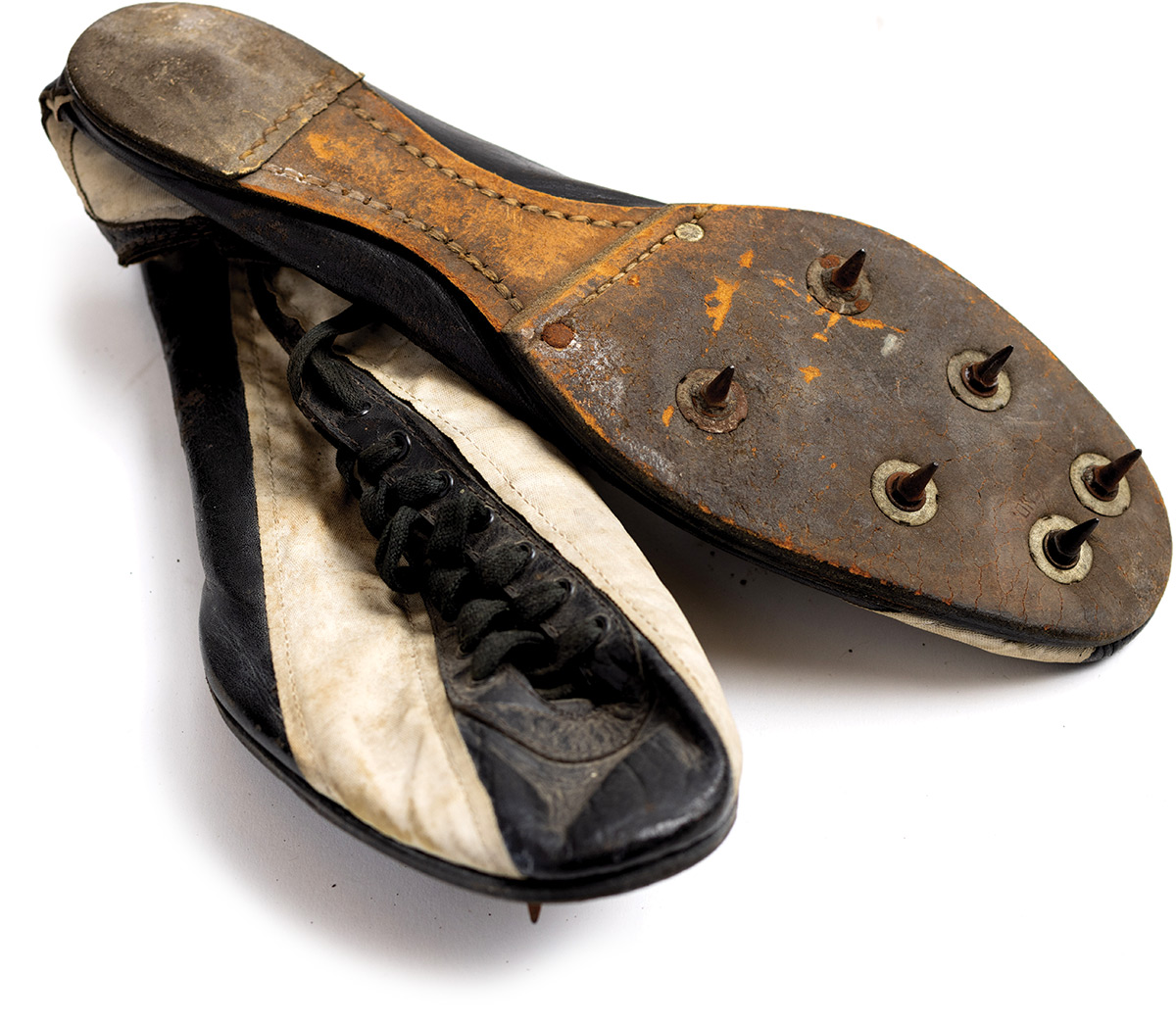
The place for a winning pace
The men’s and women’s track and field teams competed in the Horseshoe until Jesse Owens Memorial Stadium opened in 2001. Herman Turner ’52, a member of a record-setting 1-mile relay team, wore these speedy spikes.
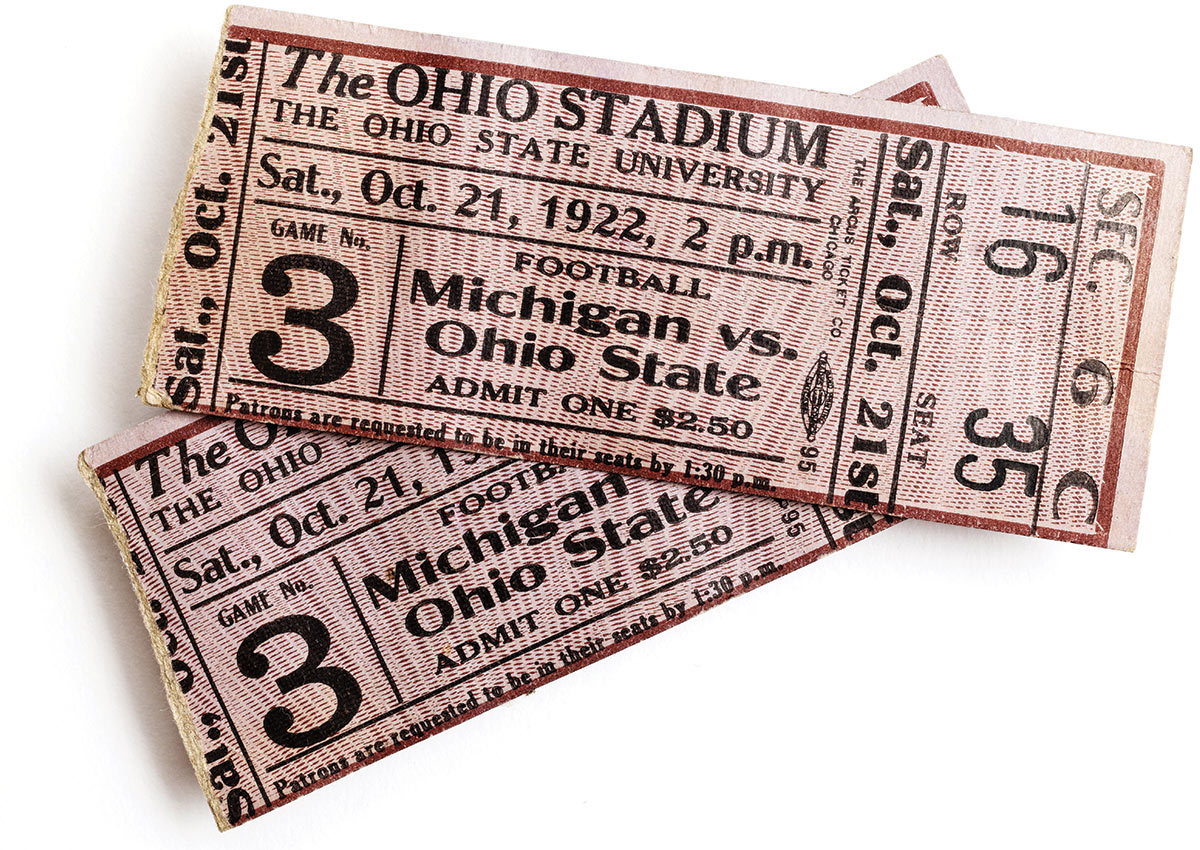
A pair of passes for a lucky pair
Few tickets to the dedication game in “The Ohio Stadium” likely exist these days. These two, on loan to University Archives from David Baker, originally cost $2.50 each. The fine print asked fans to be in their seats a half hour before the 2 p.m. kickoff.
Woody’s words of inspiration
Here’s a page right out of Woody Hayes’ playbook from 1978, the last of his 28 years as Ohio State’s head coach. His talking points here — stressing the importance of a winning attitude, hard work and continuous improvement — were no doubt key to his 205–61–10 record with the Buckeyes.
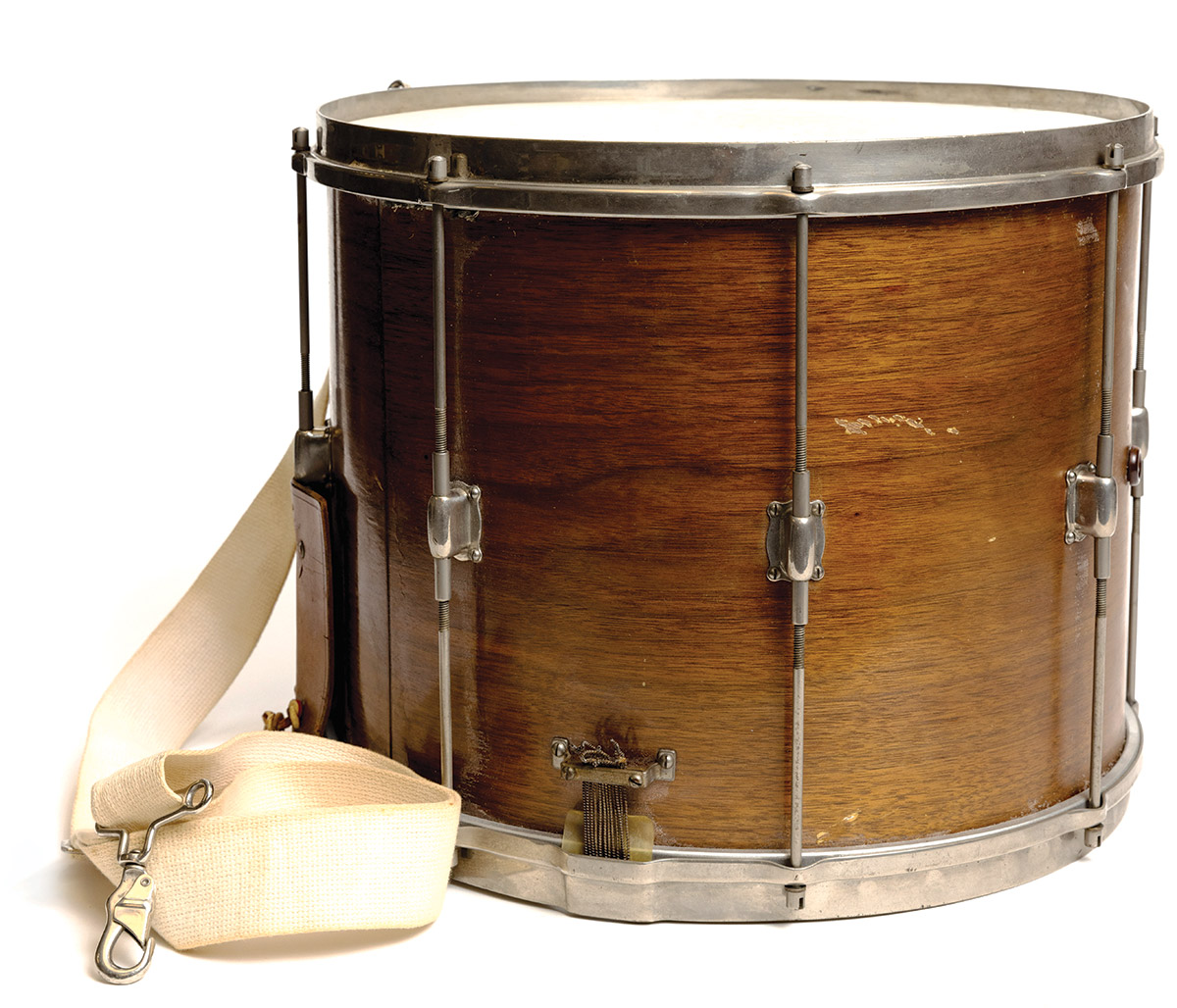
Marching to a singular beat
Alfred Roloson ’32 used this drum as a member of The Ohio State University Marching Band throughout his college years. The stadium was just 5 years old — and the band had existed for 49 years — when he arrived for his freshman year.

